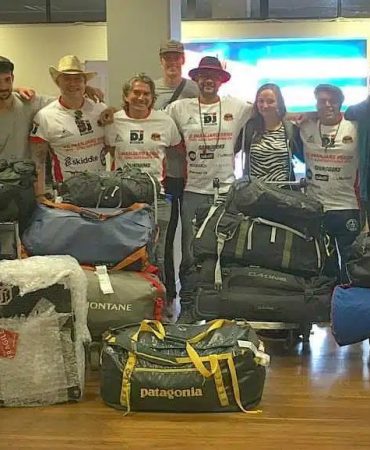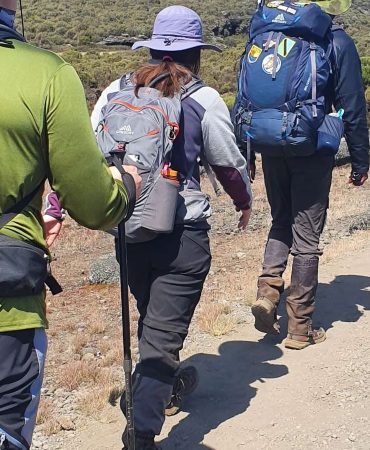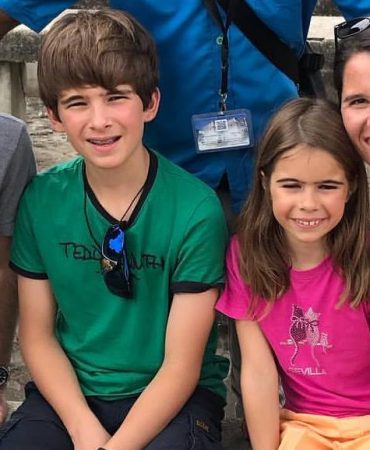Hike Kilimanjaro: Epic 8-Day Challenge Awaits You! – EAST
fromHike Kilimanjaro in 8 days for an epic adventure. Conquer Africa’s tallest peak with experienced guides and create memories that last a lifetime.
Hike Kilimanjaro Lemosho 8 Days: Embark on an 8-day adventure through the scenic Lemosho Route on Mount Kilimanjaro, Tanzania. This comprehensive guide covers everything you need to know for a successful trek, from preparation tips and key highlights of the route to cultural insights and safety precautions.
Discover the beauty of Kilimanjaro, where lush rainforests give way to alpine deserts, culminating in the breathtaking summit at Uhuru Peak. Perfect for both novice and experienced hikers, this journey combines thrilling challenges with enriching experiences, making it the ultimate trek for any adventurer.
Introduction
Hike Kilimanjaro Lemosho 8 Days for an ultimate adventure through one of the most scenic routes to the summit of Africa’s highest peak. This guide provides essential information for a successful trek, including preparation tips, route highlights, and practical advice.
Geographical Information
Where is Mount Kilimanjaro on the Map?
Mount Kilimanjaro is located in northeastern Tanzania, near the Kenyan border. It is the tallest free-standing mountain in the world, towering at 5,895 meters (19,341 feet) above sea level.
Mount Kilimanjaro World Map
On a world map, you can find Mount Kilimanjaro just below the equator in East Africa. Its snow-capped peaks are a stark contrast to the surrounding savannah.
Where is Mount Kilimanjaro on a Map of Africa?
On a map of Africa, Kilimanjaro is situated in the northern part of Tanzania. It is one of the continent’s most iconic landmarks, attracting climbers from around the globe.
Cultural Insights
Local Customs and Traditions
The local Chagga and Maasai tribes around Kilimanjaro have rich cultural traditions. Respecting their customs, such as dressing modestly and greeting elders with respect, can enrich your experience. Learning basic Swahili phrases like “Jambo” (hello) and “Asante” (thank you) can also be beneficial.
Cuisine to Try
Tanzanian cuisine offers delicious dishes like Ugali (a maize flour porridge), Nyama Choma (grilled meat), and Chapati (a type of flatbread). These hearty meals are perfect for replenishing energy during your trek.
Must-Visit Attractions
Key Highlights of the Lemosho Route
The Lemosho Route is famous for its stunning landscapes and diverse ecosystems:
- Shira Plateau: Offers expansive views and serves as an excellent spot for acclimatization.
- Barranco Wall: A challenging yet exhilarating climb with spectacular views.
- Lava Tower: A unique rock formation providing both a challenge and a memorable sight.
- Stella Point: Near the summit, this spot is perfect for witnessing breathtaking sunrises.
Activities and Experiences
Unique Experiences Along the Lemosho Route
- Wildlife Watching: Spot animals such as colobus monkeys, buffaloes, and various bird species.
- Camping Under the Stars: Enjoy clear, star-filled skies at higher altitudes, providing a surreal camping experience.
Travel Tips
Preparing for the Climb
- Essential Gear and Equipment: Pack sturdy hiking boots, thermal clothing, a quality sleeping bag, and trekking poles. These items are crucial for comfort and safety.
- Physical Preparation and Training Tips: Engage in regular cardiovascular exercises, strength training, and practice hikes to build the necessary fitness level.
Accommodation Options
- Types of Accommodation Available: Options range from basic campsites to more comfortable huts, depending on your trekking package. Each night, rest at designated campsites with adequate facilities.
Transportation and Logistics
- How to Get to the Starting Point: Most climbers fly into Kilimanjaro International Airport and travel by road to the Londorossi Gate.
- Transportation Options in Tanzania: Consider private transfers, public buses, or taxis based on your budget and preferences.
Safety and Health Precautions
Altitude Sickness
- Recognizing and Preventing Altitude Sickness: Symptoms include headaches, nausea, and dizziness. Preventive measures include gradual acclimatization and staying hydrated.
- Tips for Acclimatization: Follow the “climb high, sleep low” principle, take it slow, and consider using medication like Diamox.
Health and Safety Tips
- General Health Precautions: Stay hydrated, eat well, and get enough rest to maintain health during the trek.
- Safety Measures to Ensure a Safe Climb: Use a reputable trekking company, follow your guide’s instructions, and be prepared for emergencies.
Budget Planning
Cost Breakdown
- Estimated Costs for the 8-Day Trek: The total cost can range from $1,500 to $3,000, depending on the trekking company, accommodation choices, and additional services.
- Budget-Friendly Tips: Book in advance, travel in a group, and choose a reputable yet affordable trekking company to manage expenses.
Saving Money
- Strategies to Reduce Costs: Opt for standard services, share transportation, and bring some personal gear to save money.
- Affordable Travel Options: Consider traveling in the off-season and look for package deals to lower costs.
Conclusion
Overall Travel Recommendations
Hiking the Kilimanjaro Lemosho Route over 8 days is an unforgettable adventure. The scenic diversity, cultural encounters, and well-structured itinerary make it an ideal choice for climbers.
- Final Tips for Climbers: Prepare adequately, choose the right gear, and acclimate properly to ensure a successful and enjoyable climb.
-
Reviews 0 Reviews0/5
-
Vacation Style Holiday Type
-
Activity Level Challenging
-
1-16
The Lemosho Route on Mount Kilimanjaro offers an exhilarating 8-day trekking experience through diverse landscapes and ecosystems. Starting from lush rainforests, climbers ascend through alpine meadows to reach the snowy summit. Known for its scenic beauty and lower traffic, this route provides ample time for acclimatization, increasing your chances of a successful climb. Whether you’re a seasoned trekker or a first-time climber, the Lemosho Route promises unforgettable vistas, cultural encounters, and a rewarding challenge to conquer Africa’s highest peak.
Embarking on the Mount Kilimanjaro trek via the Lemosho Route is an exciting journey, and you’ll be well taken care of with this package. The price includes various components to ensure a smooth and enjoyable adventure:
- Park Entry Fees: Grants you access to the natural beauty and wonders of Kilimanjaro.
- Camping Fees: Accommodations during the trek, immersing you in the stunning landscapes.
- Transportation: Convenient transport to and from the Kilimanjaro gate, so you can focus on the climb.
- Team Kilimanjaro Rescue Fees (18%): Ensures you have a safety net in case of any unforeseen circumstances.
- VAT on Tour Fees: Transparent pricing with included value-added tax.
- Professional Mountain Guides, Cooks, and Porters: A skilled and friendly team to assist you throughout the journey.
- 3 Hot Meals Daily: Keeping you energized with delicious meals during the trek.
- Treated and Filtered Drinking Water: Hydration is key, and you’ll have access to clean water throughout.
- Hot Water for Washing: Comfort and cleanliness even in the mountainous terrain.
- Fair Wages for the Mountain Crew: Supporting the hardworking individuals making your adventure possible.
- Kilimanjaro Association of Tour Operators (KIATO) Government Taxes: Complying with regulations and contributing to sustainable tourism.
- Oximeter: Monitoring oxygen levels for your safety at higher altitudes.
- Emergency First-Aid Kit: Preparedness for any medical needs that may arise.
- Visa – MasterCard (3.5%): Convenient payment options for a hassle-free experience.
- Sleeping mattress; Quality mess tents with tables and chairs Emergency first-aid kit
With all these inclusions, you’re set for an unforgettable journey up the majestic Mount Kilimanjaro. Any specific details you’re curious about or need more info on?
Got it! Here are the aspects not covered in the Mount Kilimanjaro trekking package:
- Airfare: Your journey to and from Kilimanjaro is an extra consideration to plan for.
- Tips: While the crew is well taken care of, tips for porters, guides, cooks, and assistant guides are not included.
- Flights: Separate from the transportation to the Kilimanjaro gate, your personal flights aren’t part of the package.
- Hotels in Kilimanjaro/Arusha: Accommodations outside the trek duration require separate arrangements and expenses.
- Transfer from Arusha to Kilimanjaro: Transportation between these locations is an additional arrangement to be made.
- Airport Transfer Round Trip: Pickup from Kilimanjaro International Airport (JRO) to the hotel in Kilimanjaro and return transfer from the hotel to JRO.
- Hotel Upgrade Costs: Any preference for alternative hotels beyond the standard ones will have additional costs.
- Non-essential Items: Personal choices like alcohol, beverages, cigarettes, snacks, etc., fall outside the package.
These exclusions provide flexibility for personal preferences and choices during your Kilimanjaro adventure. Anything specific you’re considering or need assistance with regarding these aspects?
- Day 1 Londorossi Gate to Mti Mkubwa (Big Tree) Camp
- Day 2 Mti Mkubwa Camp to Shira 1 Camp
- Day 3 Shira 1 Camp to Shira 2 Camp
- Day 4 Shira 2 Camp to Lava Tower to Barranco Camp
- Day 5 Barranco Camp to Karanga Camp
- Day 6 Karanga Camp to Barafu Camp
- Day 7 Summit day - Barafu Camp to Uhuru Peak and descent to Mweka Camp
- Day 8 Mweka Camp to Mweka Gate
The duration varies based on the chosen route, but most treks last between 7 to 10 days.
Altitude sickness is a potential challenge. Adequate acclimatization, hydration, and a gradual ascent can help prevent it.
While a good fitness level is essential, Kilimanjaro is achievable for individuals with dedication and proper training.
While solo treks are possible, a guided tour enhances safety, navigation, and overall experience.
The dry seasons of January to March and June to October are ideal, providing stable weather conditions.
Responsible trekking involves respecting local culture, minimizing environmental impact, and supporting ethical tourism practices.
-
 Joining Group Marangu Route: Top 7-Day Trek Offers - EAST
Joining Group Marangu Route: Top 7-Day Trek Offers - EAST
Joining Group Marangu Route: Top 7-Day Trek Offers - EAST
Joining Group Marangu Route: Top 7-Day Trek Offers - EAST
-
 Marangu Route 5 Days Itinerary: Epic Kilimanjaro Trek - EAST
Marangu Route 5 Days Itinerary: Epic Kilimanjaro Trek - EAST
Marangu Route 5 Days Itinerary: Epic Kilimanjaro Trek - EAST
Marangu Route 5 Days Itinerary: Epic Kilimanjaro Trek - EAST
-
 Rongai Route Kilimanjaro: Epic 6-Day Climb Deal - EAST
Rongai Route Kilimanjaro: Epic 6-Day Climb Deal - EAST
Rongai Route Kilimanjaro: Epic 6-Day Climb Deal - EAST
Rongai Route Kilimanjaro: Epic 6-Day Climb Deal - EAST
-
 Rongai Route Kilimanjaro: Epic 6-Day Climb Deal - EAST
Rongai Route Kilimanjaro: Epic 6-Day Climb Deal - EAST
Rongai Route Kilimanjaro: Epic 6-Day Climb Deal - EAST
Rongai Route Kilimanjaro: Epic 6-Day Climb Deal - EAST
-
 Rongai Route Kilimanjaro: Epic 6-Day Climb Deal - EAST
Rongai Route Kilimanjaro: Epic 6-Day Climb Deal - EAST
Rongai Route Kilimanjaro: Epic 6-Day Climb Deal - EAST
Rongai Route Kilimanjaro: Epic 6-Day Climb Deal - EAST









